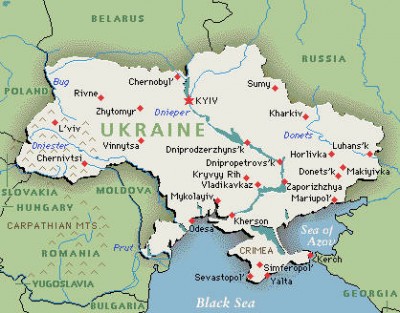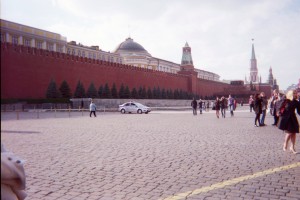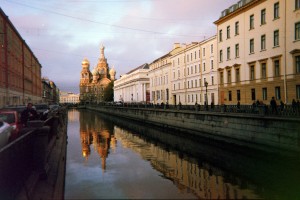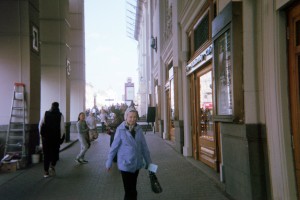
(Map of Ukraine and surrounding areas; http://www.globalresearch.ca/donbass-and-the-big-game-reformatting-ukraine-is-on-the-agenda-russia-will-not-remain-on-the-sidelines/5453465)
The Donbas Rift
By Serhiy Kudelia, Assistant Professor of Political Science at Baylor University
Russian Politics and Law (journal), Volume 54, No, 1, 2016
Professor Kudelia’s in-depth report on the evolution of the Donbas rebellion in the winter of 2013-2014 in Ukraine generally follows the basic outline set out in my previous writings about the nature of the Ukraine conflict. However, it also provides some additional facts and nuance.
One valuable point that Kudelia underscores is that the oligarchs of the Donbas region of southeastern Ukraine “hedged their bets” by trying to deal with both the coup government in Kiev and its representatives as well as the rebels in Donbas. This was a contributing factor in how the Donbas rebels were able to establish their power, increasingly independent of Kiev’s governance.
After the Euromaidan victory, the Party of Regions’ [Yanukovich’s party] public statements were limited to demands that greater power be given to local authorities and that the rights of Russian-speaking people be protected. However, the sudden departure of Yanukovych and his supporters led the party to disintegrate into several factions associated with large business groups (e.g., Rinat Akhmetov, Dmitry Firtash, and Alexander Efremov). Each of these groups had its own interests in the Donbas; some were more insistent than others, and made tacit alliances with separatist leaders.
Another fact elaborated on is the role played by members of the security forces who lived in Donbas, many of whom had worked security on the Maidan, and considered the new Kiev government to have risen to power in a violent coup, in supporting the rebels:
If initially the majority of these groups were composed of activists of local pro-Russian organizations and “Cossacks,” by March they were joined by sympathizers that included former Afghan veterans and recently active Ukrainian law enforcement officers. Alexander Khodakovsky, future commander of the militia battalion Vostok, headed the Donetsk SBU special unit Alfa and took part in the storming of the Trade Union House, which was the headquarters of Euromaidan. His example was followed by many from the ranks of the Donetsk and Luhansk Berkut, who underwent more than one rotation at the Maidan- some were afraid of being prosecuted by of the new government, others were out for revenge. Local militias were being joined by former anti-Maidan activists, who returned from Kyiv with new experiences of violent struggle. As a result, a partisan core that would become the epicenter of the military phase of the confrontation began to form in the Donbas.
….Leaders of some Donbas cities assisted in organizing regular meetings under Soviet and Russian flags. Later these urban leaders helped to organize the May 11 referendum. These meetings and the “people’s guards” were financed by local businesses operating under the protection of bosses from the Party of Regions…. At the same time, the heads of local police departments and SBU offices (who were part of the patronage network of the Party of Regions) did not obstruct the development of the separatist movement. In fact, the majority of law enforcement authorities ceased to function, and seizures of law enforcement agencies were committed with their sanction or direct assistance. For example, during the storming of the Luhansk SBU, the police refused to protect the building, while the head of Internal Affairs insisted on the need to release the detained separatist leaders.11 According to Alexander Petrulevich, the former head of the Luhansk SBU, most police officers in the region came out of [working on the] Maidan “with resentment and bruised psyches, plus they were all threatened with criminal prosecution.”
Kudelia states that there were numerous “miscalculations” by the Kiev regime that created conditions conducive to rebels consolidating their local power. Furthermore, Russia reacted to facts on the ground to support its own perceived interests but was not the cause.
Russia exploited these developments, but did not play a determining role in them….Kremlin and Russian agents did not act in a vacuum. The space for these events was largely created by events inside Ukraine, which were not only outside the direct control of Moscow, but often ran counter to the interests of the Russian leadership.
The events referenced above include the hijacking of the Maidan movement by the ultra-nationalist forces who utilized violence, beginning on February 18, 2014, with the march down Institutskaya Street in Kiev, which was initially billed as a “peaceful offensive” on the Rada (parliament); the inability or unwillingness of the rest of the Maidan movement to keep the protests peaceful; the rejection by those same violent extremists of the agreement negotiated by Poland, Germany and France with the Yanukovich government that called for early elections and a devolution of power; and, the subsequent violence against the rebels by the new government of Kiev.
Kudelia states that the new Kiev government did make an attempt to negotiate with the rebels. However, one is left to wonder how seriously this was supposed to be taken by the rebels when one of the two men that Kiev sent for this purpose was Neo-Nazi activist Andrey Parubiy, who participated in the violence of the Maidan (The other was deputy prime minister, Vitaly Yarema). This attempt at negotiation occurred only after the Donbas cities of Donetsk and Luhansk had successfully held a referendum calling for self-determination. This was viewed as a bargaining chip to gain as much “home rule,” as Professor Stephen F. Cohen calls it, as possible.
Interestingly, Kudelia does not go into any detail about the violence of February 20th to the 22nd that directly led to the ousting of Yanukovich – the sniper attacks on the Maidan that killed nearly 100 people, both protesters and police. The most thorough forensic investigation of the sniper attacks to date, has been the work of Dr. Ivan Katchanovski, a professor of Political Studies at the University of Ottawa.
Kudelia also explains that the Kiev government’s initial strategy of focusing its “Anti-Terrorist Operation” (ATO) on the city of Slavyansk also provided space for the development of what would become the Donetsk People’s Republic and the Luhansk People’s Republic.
Kudelia also reinforces what academic specialist Nicolai Petro, who was in Ukraine at the time of the upheaval in 2013-2014, pointed out: that majorities of Donbas residents polled in April 2014 saw the new Kiev government as illegitimate and believed the Neo-Nazi Right Sector was a powerful and threatening organization. These views, presumably along with reports of proposals in the Rada threatening the Russian language and anti-Maidan protesters being beaten and harassed on their return to southeast Ukraine and Crimea, culminated in the creation of local “paramilitary organizations” in the Donbas, similar to the ones formed in Crimea in order to defend their respective populations.
He also states that the rebellion originally called for federalization, with only a minority calling for an independent Novorossiya. These calls would understandably increase later on, after months of Kiev’s ATO against the Donbas, which included shelling civilian neighborhoods and unleashing vicious Neo-Nazi battalions to compensate for the lack of stomach many Ukrainian Army recruits had for attacking their fellow Ukrainians.
Rallies in support of federalizing Ukraine were held in most major cities in the Southeast. However, the Donbas was the only region where Kyiv was unable to regain control and prevent the outbreak of an armed movement to join Donetsk and Luhansk regions to Russia. This was facilitated by three factors. First, the Donbas was significantly different from other regions in terms of its politics and its level of integration into the Ukrainian state. In contrast to all other regions, the majority has traditionally supported the unification of Ukraine with Russia (66 percent) and regretted the collapse of the Soviet Union (61 percent).7 In April 2014, after Russia’s annexation of Crimea, almost two-thirds of the region’s residents continued to express a positive attitude toward Russian president Vladimir Putin, while in other regions the level of support was no higher than 20 percent. With the exception of Crimea, the Donbas was the only territory where a majority (57 percent in 2013) stated that it would not support the independence of Ukraine in the case of a second referendum (i.e., the 1991 referendum, when nearly 84 percent voted in favor of independence).8 While before the revolution few people supported separatism (8 percent in 2012), recognition of the the Ukrainian government was conditional. This is evidenced by the prevalence among Donbas residents of a regional identity-in contrast to other Ukrainian regions, Donbas residents primarily identify themselves with their city or region, rather than with the state as a whole.
It is recognized that the historical ethnic ties of Donbas to Russia – since the 19th century, much of the area had been populated by Russian settlers after coal mining was established – fueled its having the highest “animosity toward Ukrainian nationalists,” who are stridently, even violently, anti-Russian. This made the Donbas population particularly sensitive to news reports from Russia of the actions taking place during and after the Maidan protests.
Kudelia’s analysis reinforces what I and other analysts have argued for some time: 1) there was broad and authentic native support for the Donbas rebellion, and 2) an independent Donbas would not be in the Kremlin’s interests as it would remove the block of the population of Ukraine that would serve as a counterweight to anti-Russian sentiment, right-wing extremism and NATO membership. Moreover, it is unlikely that Russia would want to have to deal with an economically non-viable state on its border or to expend the resources necessary to bring the Donbas into Russia – not to mention the further aggravation it would create in Russia’s relations with the west.
In short, the coup government in Kiev seriously miscalculated the depth of resistance they would be facing in the Donbas and thousands of people have paid a horrible price. Russia has provided military, political and diplomatic support to ensure the rebels are not defeated or wiped out by Kiev, but are granted sufficient autonomy within the Ukrainian state as is reflected in the Minsk Agreement. Russia did not create the problem, nor is there any evidence that Russia desires or supports actual separatism, which would not be in their interests. In fact, their actions point in a different direction as is reflected in its facilitating the replacement of Igor Strelkov and Alexander Borodai, who advocated the Novorossiya project of an independent Donbas, perhaps eventually united with Russia, with leaders more amenable to negotiation with Kiev.



